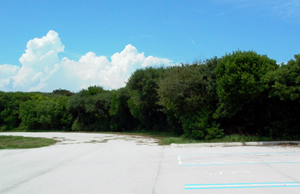Home > Site analysis > Evaluate below-ground characteristics > Soil salinity
Soil salinity

Some soils in coastal areas, or in regions of the country receiving less than 30 inches of rainfall have a high soil salt content. A site that receives regular applications of deicing salts may also have elevated levels of soil salt. Salts dry out roots making it difficult or impossible for trees to establish and grow.
If you are unfamiliar with the area, or if you suspect that salts could be a problem, have the soil tested for this. If soil conductivity (E.C.) is over 1 millimhos per centimeter (mmhos per cm), then salt content may be too high for many trees. Choose trees that have good tolerance to soil salts, leach the salts with water (if possible), or replace the soil with good quality material.
Even if soil conductivity is low, you may still have a salt problem, especially if deicing salts are used nearby. Have the soil tested and interpreted by a soil scientist for excess sodium and sodium absorption ratios. These are the most reliable indicators of a salt contaminated soil. Please note that reliable data on salt tolerance of trees is scarce, and reports vary on the tolerance of certain species.
Irrigation water may also be salty. Have it tested if you use well water along the coast or if you live in an area with rainfall is below 30 inches per year. If conductivity of irrigation water is above 1 mmho per cm, it may cause poor growth on some trees and other plants from salt buildup. If good water is not available, choose from among the more salt tolerant trees. Find out what has been growing well in the area with the same irrigation water.
Determine if deicing salt (especially those with a high sodium content) will be regularly used on the adjacent roadway. If so, only salt tolerant trees should be selected. However, even some of these trees can not survive close to a highway or other high speed thoroughfare if salt is regularly used. Salty runoff water from the road can also wash lethal amounts of salt into the root zone.
If possible, plant on the uphill side of the road to avoid salty runoff water, or construct a berm to divert runoff away from the potential rooting zone. Some communities install trees in elevated planters along downtown streets to reduce the amount of salty water washing into the root zone. When designing parking lots and other pavement areas receiving deicing salts, make provisions for storing salt laden snow away from tree root zones.

